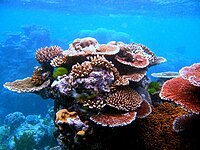
Assessment of swimming behavior of the Pacific oyster D-larvae (Crassostrea gigas) following exposure to model pollutants
Sign Up to like & getrecommendations! Published in 2019 at "Environmental Science and Pollution Research"
DOI: 10.1007/s11356-019-04156-8
Abstract: This study describes an image analysis method that has been used to analyze the swimming behavior of native oyster D-larvae (Crassostrea gigas) from the Arcachon Bay (SW, France). In a second time, this study evaluated… read more here.
Keywords: oyster larvae; larvae crassostrea; swimming behavior; crassostrea gigas ... See more keywords

Subcellular imaging of localization and transformation of silver nanoparticles in the oyster larvae.
Sign Up to like & getrecommendations! Published in 2020 at "Environmental science & technology"
DOI: 10.1021/acs.est.0c03342
Abstract: To accurately assess the behavior and toxicity of silver nanoparticles (AgNPs), it is essential to understand their subcellular distribution and biotransformation. We combined both nanoscale secondary ion mass spectrometry (NanoSIMS) and electronic microscopy to investigate… read more here.
Keywords: subcellular imaging; oyster larvae; silver nanoparticles; localization ... See more keywords

Molecular Targets for Coevolutionary Interactions Between Pacific Oyster Larvae and Their Sympatric Vibrios
Sign Up to like & getrecommendations! Published in 2019 at "Frontiers in Microbiology"
DOI: 10.3389/fmicb.2019.02067
Abstract: Bacteria of the Vibrio genus are the most predominant infectious agents threatening marine wildlife and aquaculture. Due to the large genetic diversity of these pathogens, the molecular determinants of Vibrio virulence are only poorly understood.… read more here.
Keywords: larvae sympatric; vibrio; virulence patterns; oyster larvae ... See more keywords

Dietary Exposure of Pacific Oyster (Crassostrea gigas) Larvae to Compromised Microalgae Results in Impaired Fitness and Microbiome Shift
Sign Up to like & getrecommendations! Published in 2021 at "Frontiers in Microbiology"
DOI: 10.3389/fmicb.2021.706214
Abstract: The Pacific oyster Crassostrea gigas is the world’s most cultivated oyster and seed supply is heavily reliant on hatchery production where recurring mass mortality events are a major constraint. Outbreaks of bacterial infection via microalgal… read more here.
Keywords: oyster crassostrea; pacific oyster; crassostrea gigas; oyster ... See more keywords